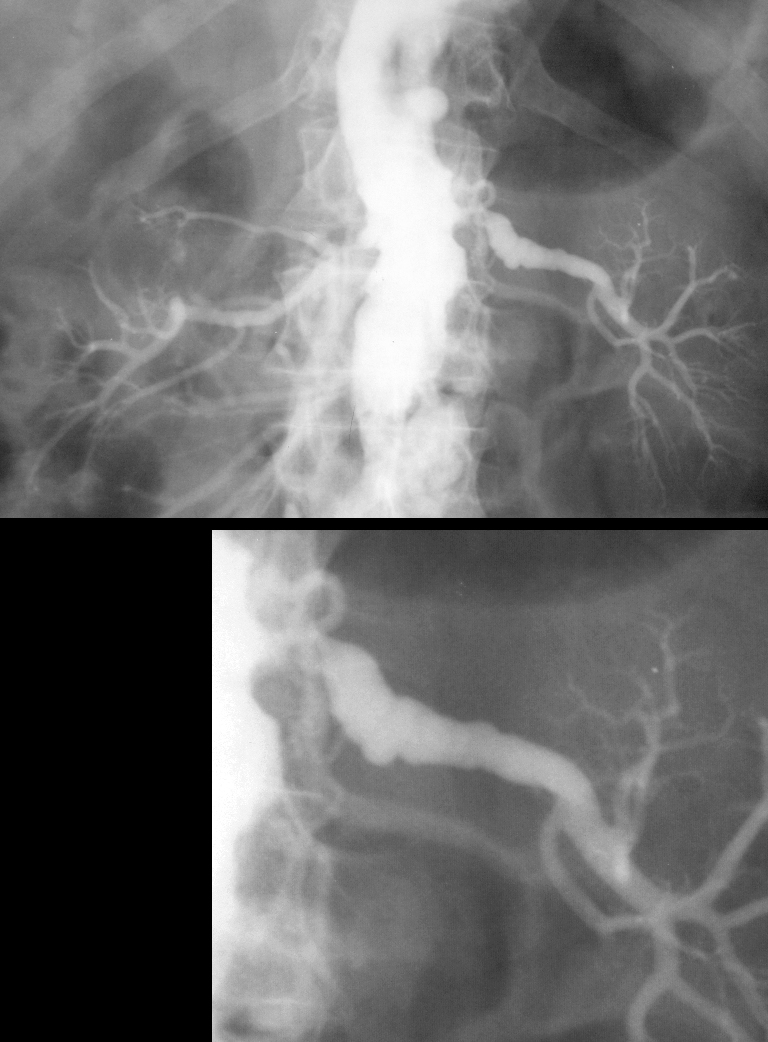
String of Beads String of Pearls
Angiography of the aorta at the level of the renal arteries show multiple alternating areas of stenosis (narrowing) and dilation, giving the appearance of a string of beads or string of pearls sign, characteristic of FMD.
Ashley Davidoff MD TheCommonVein.net 16064c
- Fibromuscular dysplasia (FMD) of the renal arteries
- is caused by abnormal cell growth within the walls of the renal arteries
- exact cause of FMD is not well known, but
- both genetic and environmental factors may play a role.
- Resulting in
- normal, elastic arterial wall is replaced by fibrous tissue,
- leading to segments of constriction (stenosis) followed by dilation.
- can lead to stenosis
- resulting in hypertension
- The term “string of beads” or “string of pearls”
- is used to describe the appearance of the affected arteries on imaging studies, particularly angiography.
- The “beads” represent areas of abnormal cell growth within the arterial wall. The normal, elastic arterial wall is replaced by fibrous tissue, leading to segments of constriction (stenosis) followed by dilation. This pattern can affect blood flow to the kidneys and potentially lead to hypertension (high blood pressure) or other renal complications.
- Treatment: The management of FMD may involve medical therapy to control blood pressure and, in some cases, interventional procedures to address the arterial narrowing. Angioplasty and stenting may be considered
